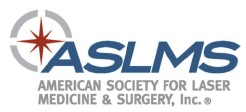 Ready for smooth, youthful looking skin but not ready for surgery? A chemical peel treatment could be just the solution that you are looking for. Chemical peels offer dramatic improvement to skin, reducing fine lines, age spots, scars and wrinkles and are a safe alternative to surgery.
Ready for smooth, youthful looking skin but not ready for surgery? A chemical peel treatment could be just the solution that you are looking for. Chemical peels offer dramatic improvement to skin, reducing fine lines, age spots, scars and wrinkles and are a safe alternative to surgery.
Normally performed on an out-patient basis, there are three types of chemical peels: light, medium and deep peels. Which type of peel you get depends on your skin’s condition, doctor’s recommendation, and what works for your lifestyle.
Chemical peels use a liquid solution that removes the top layers of your skin, revealing new and smoother skin. Chemical peels can be performed on your entire face, specific areas of your face and also on the neck, chest, hands, legs or arms. Healing time varies, depending on the type of peel that is performed.
Chemical Peels at a Glance
How Do Chemical Peels Work?
Chemical peels use solutions to peel away the top layers of your skin, revealing new, fresher and smoother skin. Three types of peels are offered, ranging from light “lunch hour” peels designed to provide subtle results with less recovery time to deep peels that provide dramatic results but that take longer to heal.
What Do Chemical Peels Treat?
All chemical peels reduce fine lines, wrinkles, pore size, scars, age spots and other signs of premature aging. However, the results will depend on the type of peel performed, and in the case of light or medium peels, may require subsequent procedures for more long-lasting results.
What Are Chemical Peel Treatments Like?
Chemical peel treatments are performed on an out-patient basis. We will cleanse the treatment areas and then apply the chemical solution. A slight burning sensation felt for a short period of time, but the solution also works as a mild anesthetic. The depth of the peel will depend on the type of peel decided upon (light, medium or deep), but all peels reveal new, fresher, more youthful skin.
Does It Hurt and What Can Go Wrong?
Chemical Peels are normally a safe procedure, however, as with any medical procedure, they have some potential risks and complications.
Though the occurrence is rare, any peel can lead to uneven skin pigmentation, infection or scarring. The greatest risk involves over-exposure to the sun. Failure to follow our directions for protecting your skin from the sun can result in uneven skin pigmentation and blotching. Deep peels may pose special risks for patients with a history of heart disease. It’s very important to notify us of any previous occurrence of heart ailments when he or she takes your medical history
What Should I Expect from Chemical Peels Treatment?
The results of a chemical peel will depend on the type of peel that was performed. A light peel will have more subtle results, which will become more visible on subsequent visits, but you will immediately see more vibrant, younger-looking skin. Medium peels will show greater results than light peels, and deep peels show the most dramatic results.
Small flakes or scabs may form to protect the new skin, but are usually easily removed gently with soap and water (we may prescribe healing ointment for use after cleansing your skin). Some people may experience abnormal itching, swelling or tingling. Your surgeon will provide you with medications or directions on how to use cold compresses to minimize this condition.
Recovery time also depends on the type of peel performed. Deep peels take weeks to heal and require some bandaging and refraining from strenuous activity. While medium peels may require you to take it easy for a few weeks, bandages are not normally needed. Light peels provide the quickest healing time.
For more information about Chemical Peels, we encourage you to call to schedule an in-office consultation.









